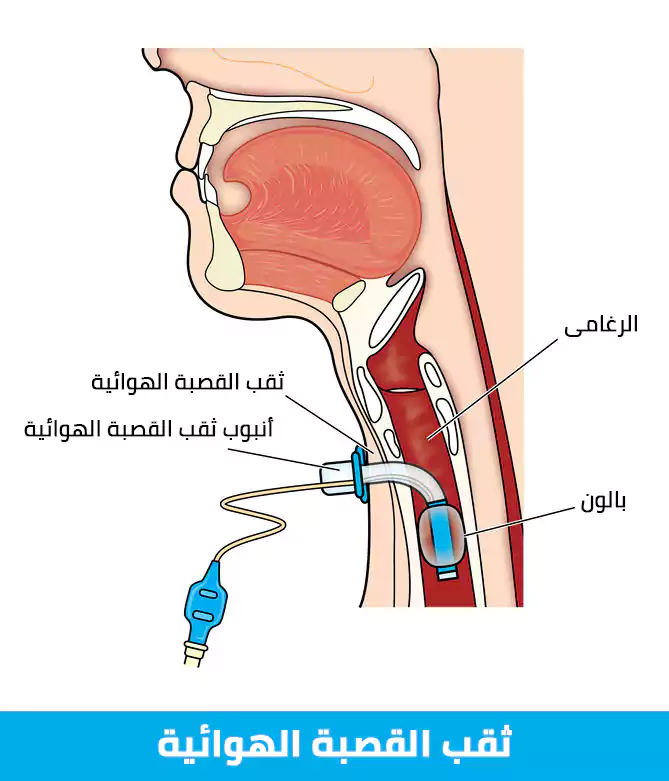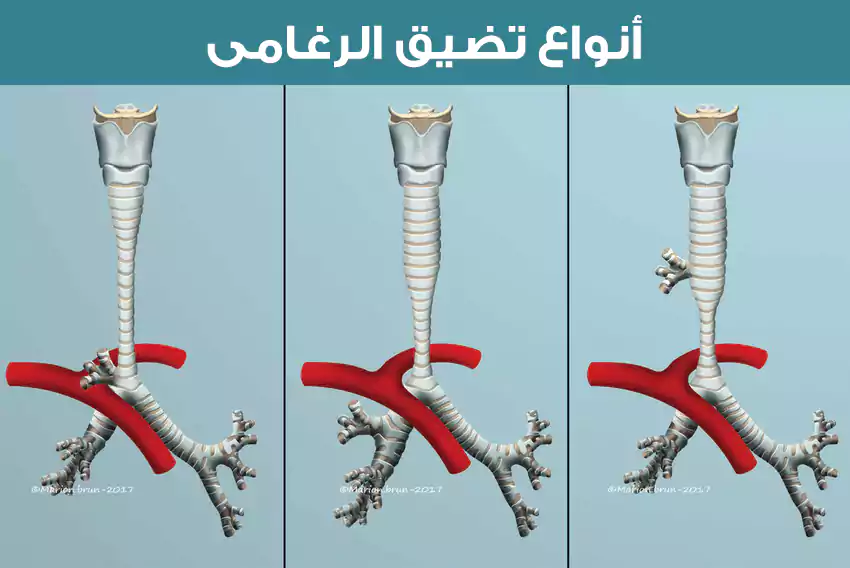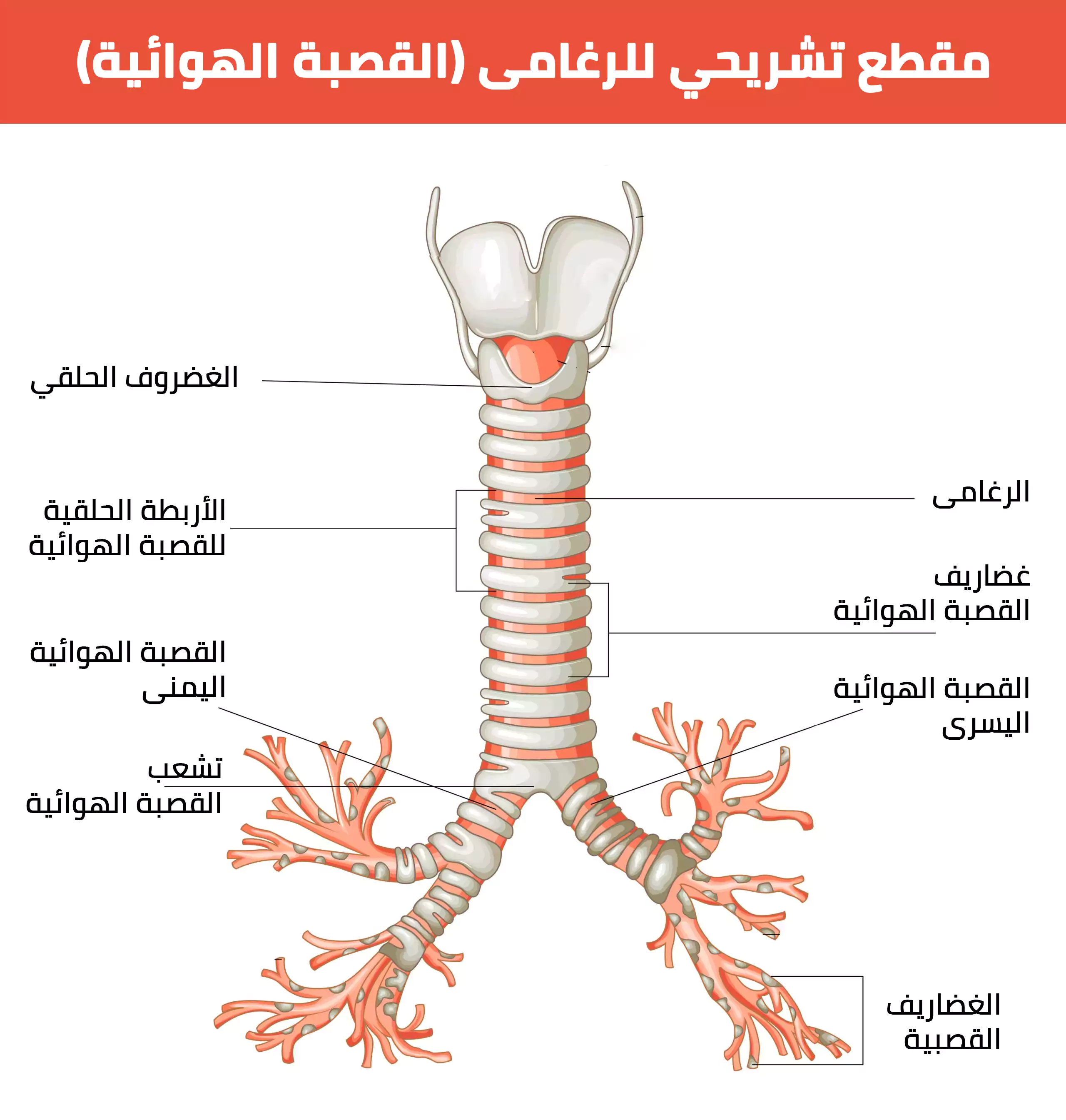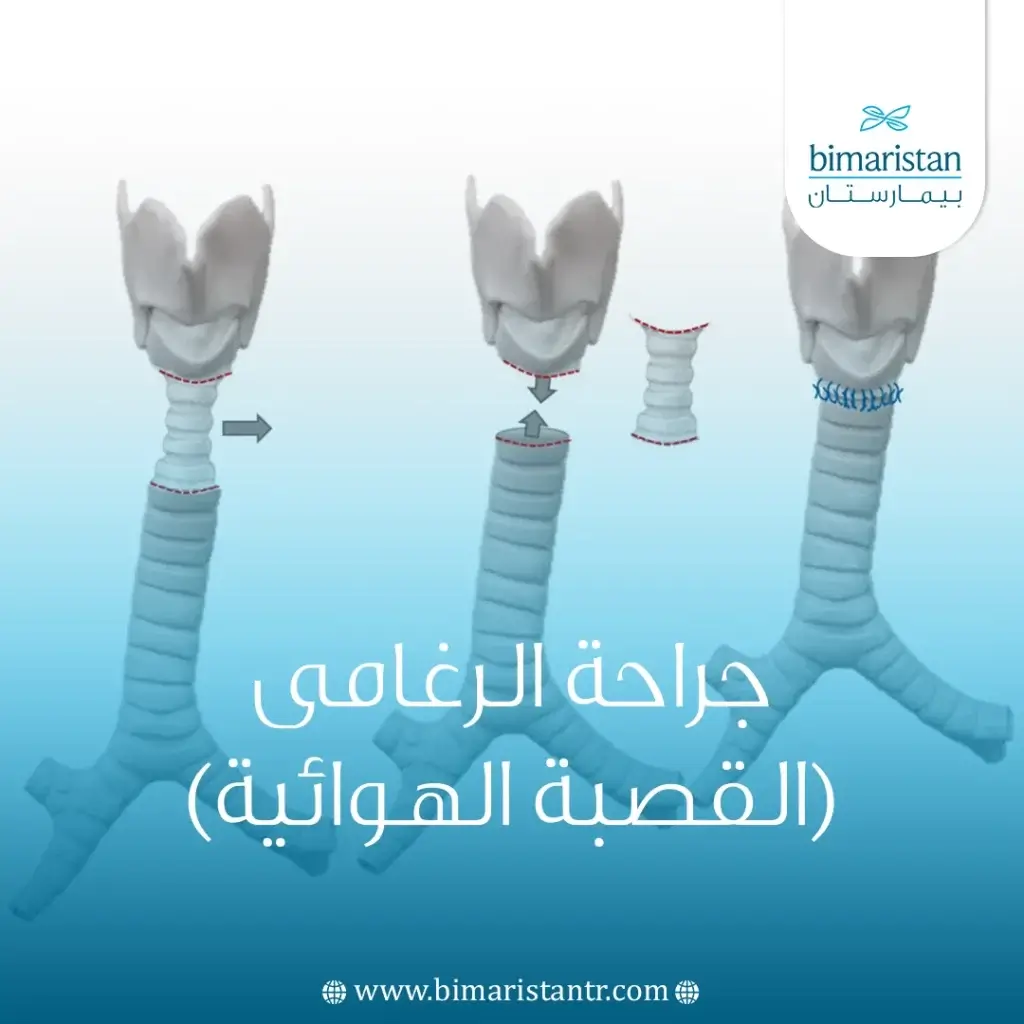The best tracheal surgery centers in Turkey treat various diseases, including congenital or acquired tracheal stenosis caused by benign or malignant tumors.
What is tracheal surgery?
Tracheal surgery treats a variety of diseases and conditions that affect tracheal function. These include airway obstruction, cancerous and noncancerous tumors, and laryngeal issues. Tracheal surgery can restore breathing function and improve the quality of life for people with common or rare tracheal diseases.
The trachea begins in the neck just below the larynx and continues down and behind the sternum. The trachea divides into two smaller tubes called the right bronchus and the left bronchus to supply air to each lung. The trachea is made up of muscles, connective tissue, and rings of hardened cartilage. They also have a lining of moist mucous membranes. The trachea expands and contracts slightly during breathing.
Tracheal surgery is a major surgery with potential risks and complications. You may have less invasive treatment options. Consider getting a second opinion about all treatment options before having tracheobronchial surgery.
Types of tracheal surgery

Types of tracheal surgery include the following:
- Laryngotracheal reconstruction, where the trachea is reconstructed and enlarged using pieces of cartilage from another area or from a donor.
- Removal of the larynx and part of the trachea and reattachment of the two limbs.
- A tracheostomy creates an opening in the front of the neck and through the trachea. A tube is inserted into the opening to provide an airway for breathing and to remove lung secretions and excess mucus.
Why is tracheal surgery performed?
Your doctor may recommend tracheal surgery to treat a disease, disorder or condition that affects tracheal function. This surgery is not common. Your doctor will consider using this surgery only if nonsurgical treatments are ineffective. So ask your doctor about all treatment options and consider getting a second opinion.

Your doctor may recommend tracheal surgery to treat:
- Fistula, or abnormal connections between the esophagus and trachea.
- Tracheal stenosis.
- Subglottic stenosis is the narrowing of the area just below the larynx.
- Tumors, including both cancerous and noncancerous growths, from both pulmonary and bronchial tissue.
Who performs tracheal surgery?
Thoracic surgeons and otolaryngologists perform tracheal surgery. Thoracic surgeons specialize in the surgical treatment of diseases of the chest, including the blood vessels, heart, lungs, and esophagus. Otolaryngologists specialize in the medical and surgical care of the ear, nose, and throat, and conditions affecting the head and neck.
How is tracheal surgery performed?
Tracheal surgery is typically performed in a hospital setting. Your surgeon may use an open surgical approach or a minimally invasive approach.
Surgical techniques for tracheal surgery
Minimally invasive surgery
Tracheal surgery involves inserting special instruments and an endoscope through at least two small incisions in your neck or chest. The endoscope is a thin, lighted instrument with a small camera. The camera transmits images of your trachea to a television screen. Your surgeon sees your windpipe on the screen during surgery. Minimally invasive surgery generally involves a faster recovery and less pain than open surgery. This is because it causes less damage to tissues and organs. Your doctor will make small incisions instead of the larger incisions used in open surgery. Surgical instruments wrap around muscles and tissues instead of cutting or displacing them as in open surgery. Your doctor may also use a laser to help perform minimally invasive surgery.
Open surgery
It involves making a large incision in the front of your neck or chest. The incision may include the sternum if the surgical site is in the lower part of the trachea. Open surgery allows your doctor to see and directly access the surgical area. Open surgery generally involves a longer recovery period and more pain than does minimally invasive surgery. Open surgery requires a larger incision and more cutting and displacement of muscles and other tissues than does minimally invasive surgery. However, open surgery may be a safer and more effective method for some patients.
Your surgeon will advise you which procedure is best for you and how long you need to stay in the hospital based on your diagnosis, age, medical history, overall health, and possibly your personal preferences. Ask your doctor about different tracheostomy surgeries and find out why he or she would use a particular type of procedure for you.

Types of anesthesia
Your surgeon will perform tracheal surgery using general anesthesia. General anesthesia is a combination of intravenous medications and gases that makes you sleep deeply and feel no pain.
What to expect on the day of tracheal surgery?
You may already be in the hospital before tracheal surgery, or you may go to the hospital on the same day.
What happens on the day of surgery:
- Talk with a nurse before surgery. The nurse will perform the necessary tests to ensure all required procedures are completed. The nurse can also answer questions and will make sure you understand and sign the surgical consent form.
- Remove all clothing and jewelry and wear a hospital gown. It is best to leave all jewelry and valuables at home or with a family member. The surgical team will give you blankets to keep you warm.
- Talk to your anesthesiologist or nurse anesthetist about your medical history.
- A member of the surgical team will start an IV.
- An anesthesiologist or nurse anesthetist will begin to sedate you.
- A tube will be placed in your windpipe to protect and control breathing during general anesthesia. You won’t feel or remember this surgical procedure.
- The surgical team will monitor your vital signs and other important body functions. This happens throughout the procedure and during recovery until you’re fully awake, breathing effectively, and your vital signs are stable.
What are the possible risks and complications of tracheal surgery?
As with all surgeries related to thoracic surgery, Tracheal surgery involves risks and complications. In some cases, complications can become serious and life-threatening. Complications can develop during surgery or during recovery.
General risks of surgery
General risks of surgery include the following:
- Anesthesia reaction, such as allergic reactions and breathing issues
- Bleeding that can lead to shock
- blood clots
- Infection
Possible complications of tracheal surgery
Tracheal issues are not common but can include:
- Breakdown of the tissues that make up the trachea.
- Perforated lung or pneumothorax. Pneumothorax is a condition in which air leaks into the space between your chest wall and the outer tissues of your lungs. This causes pain and shortness of breath.
- Damage to the esophagus.
- Damage to your thyroid gland. Your thyroid gland is located on either side of your trachea, just below your larynx.
- Damage to the nerves that control the larynx.
- Scar tissue in the trachea causes pain and difficulty breathing.
Reduced risk of complications
According to studies, complications from tracheal surgery are rare; however, you can minimize the risk of some complications by following your treatment plan as well as:
- Follow your doctor’s recommendations for activities, dietary restrictions, and lifestyle before surgery and during recovery. This includes respiratory and speech therapy.
- For female patients, tell your doctor if you are breastfeeding or if there is a possibility of pregnancy.
- Notify your doctor immediately of any concerns, such as bleeding, fever, increased pain, redness, swelling, or gonorrhea.
- Take your medications exactly as directed.
- Tell all members of your care team if you have any allergies.
How do I prepare for tracheal surgery?
You are an important member of your healthcare team. The steps you take before surgery can improve your comfort and outcomes. You can prepare for tracheal surgery by:
- Answer all questions about your medical history, allergies, and medications you are taking. This includes prescription and over-the-counter medications, herbal remedies, and vitamins. It’s a good idea to carry an up-to-date list of your medical conditions, medications, and allergies at all times.
- Perform a preoperative test as directed. Testing will vary depending on your age, health, and specific procedures. Preoperative testing may include a chest X-ray, electrocardiogram (EKG), blood tests, and other tests as needed.
- Lose excess weight before surgery with a healthy diet and exercise plan.
- Do not eat or drink before surgery as directed. Your surgery may be canceled if you have eaten or drunk too close to the start of surgery because you may choke on stomach contents during anesthesia.
- Stop smoking as soon as possible. Even quitting for just a few days can be beneficial and can help the healing process.
- Take or completely stop medications as directed. This may include not taking aspirin, ibuprofen, and blood thinners. Your doctor will give you instructions on taking your medications and supplements.
Don’t forget to ask your doctor these questions
Facing surgery can be stressful. It is common for patients to forget some of their questions during a visit to the doctor’s office. Contact your doctor with concerns and questions before surgery and between appointments.
Questions may include the following:
- Why do I need tracheal surgery? Are there any other options to treat my condition?
- How long will the surgery take? When can I go home?
- What restrictions will I have after surgery? When can I return to work and other activities?
- What kind of help will I need at home?
- What medications will I need before and after surgery? How should I take my medications?
What can I expect after tracheal surgery?
Knowing what to expect can help make your road to recovery after tracheal surgery as smooth as possible.
How long does it take to recover?
You will stay in the recovery room after surgery until your vital signs stabilize. Your care team will then move you to the intensive care unit (ICU). ICUs provide 24-hour monitoring and specialized care.
It may take a few hours for the main effects of anesthesia to wear off and for you to regain consciousness. When you wake up, you may have a breathing tube in your mouth and tubes and wires attached to your body. This allows your team to monitor your vital signs, drain body fluids, take blood, and administer medications and fluids.
You won’t be able to speak if you have a breathing tube. However, the care team usually removes it within 24 hours. You may have a sore throat from the breathing tube. This is usually temporary, but tell your care team if you are uncomfortable.
Once you recover, you can move to a room outside the ICU. The hospital stay is usually longer after open tracheal surgery than after a minimally invasive procedure. You’ll likely stay in the hospital for several days.
Recovery after surgery is a gradual process. Recovery time varies depending on the procedure, type of anesthesia, your general health, age, and other factors. Your doctor will likely refer you to a respiratory or speech therapy program to help you recover. Full recovery takes several weeks.
Will I feel pain?
Pain control is important for smooth healing and recovery. There will be discomfort after surgery. Your doctor will manage your pain until you are comfortable. Call your doctor if your pain worsens or changes, as it may be a sign of complications.
Sources:

